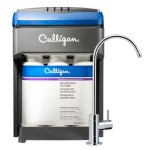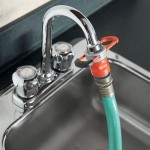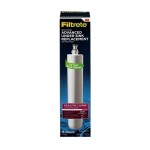Installing a Pedestal Sink Without Opening the Wall: A Comprehensive Guide
Replacing a bathroom sink can significantly update the aesthetic of a space. While traditional installations often involve opening the wall to adjust plumbing or reinforce mounting points, it is possible to install a pedestal sink without resorting to extensive demolition. This approach minimizes mess, reduces the overall project time, and can save on professional labor costs. This article will explore the methods and considerations for installing a pedestal sink without opening the wall, focusing on preparation, adaptation, and secure mounting techniques.
Before commencing any plumbing work, safety is paramount. The water supply to the existing sink must be shut off. Typically, shut-off valves are located directly beneath the sink. In older installations, these valves may be absent or corroded and non-functional. If this is the case, the main water supply to the entire house must be turned off. Following the water shut-off, the existing sink and faucet should be completely disconnected. Place a bucket underneath the drain pipes to catch any residual water that will inevitably leak out during disassembly. Thoroughly dry the area before moving on to the next steps.
The selection of the new pedestal sink is crucial. It is imperative to accurately measure the existing plumbing configuration – the height of the water supply lines and the position of the drain pipe – relative to the floor and the wall. These measurements must be compared to the specifications of the proposed pedestal sink. Not all pedestal sinks are compatible with all plumbing setups. Significant discrepancies may necessitate minor plumbing adjustments, but the goal is to avoid relocating pipes within the wall. Consider a pedestal sink that offers some flexibility in its design to accommodate existing plumbing.
Assess the existing wall condition and mounting points. Pedestal sinks, while supported by the pedestal itself, still require secure attachment to the wall to prevent tipping and ensure stability. The existing sink may have been mounted to studs within the wall. Locate these studs using a stud finder. If the new pedestal sink's mounting holes align with these studs, the installation process is significantly simplified. However, if the alignment is off, alternative mounting strategies are needed. Ideally, at least one mounting point should align with a stud for maximum stability. If existing wall anchors are present, evaluate their condition and replace them if they appear worn or damaged.
Key Point 1: Utilizing Existing Plumbing Connections
The success of installing a pedestal sink without opening the wall hinges on adapting to the existing plumbing infrastructure. The primary challenge often lies in the alignment of the supply lines and the drain pipe. New flexible supply lines can be used to connect the existing shut-off valves to the faucet on the new pedestal sink. These flexible lines offer a degree of adjustability in length and angle, mitigating minor misalignments. Choose supply lines that are made of high-quality materials, such as braided stainless steel, for durability and resistance to corrosion.
The drain pipe presents another potential hurdle. If the existing drain pipe is not perfectly aligned with the drain opening on the new pedestal sink, a P-trap extension can be used. A P-trap extension is a section of pipe that adds length and adjustability to the P-trap, allowing it to connect to the drain opening even if it is slightly offset. It is essential to use Teflon tape or pipe joint compound on all threaded connections to prevent leaks. Carefully tighten all connections to ensure a watertight seal. Avoid over-tightening, as this can damage the pipes or fittings.
If the existing drainpipe material is different from the new sink's drainpipe material (e.g., cast iron to PVC), a transition fitting will be necessary. These fittings are designed to connect dissimilar materials securely and prevent leaks. Ensure the transition fitting is compatible with both types of pipe and that it is properly installed according to the manufacturer's instructions.
Key Point 2: Secure Wall Mounting Without Structural Alterations
Achieving a stable and secure wall mounting without opening the wall often requires the use of high-strength wall anchors. The type of wall anchor needed depends on the wall material (drywall, plaster, tile) and the weight of the pedestal sink. For drywall, toggle bolts or heavy-duty self-drilling anchors are recommended. Toggle bolts provide a very strong hold by distributing the load over a wider area on the back side of the drywall. Self-drilling anchors are easier to install and can also provide a secure hold, especially when used in conjunction with the pedestal's inherent support.
If the wall is tiled, special considerations are required. Drilling through tile can be challenging and can lead to cracking if not done carefully. Use a diamond-tipped drill bit specifically designed for tile. Start with a low speed and gradually increase the speed as you drill through the tile. Apply gentle pressure to avoid cracking the tile. Once the tile is drilled, use appropriate wall anchors for the material behind the tile (e.g., drywall or plaster).
When installing the wall anchors, ensure they are properly aligned with the mounting holes on the pedestal sink. Use a level to ensure the sink is perfectly vertical before tightening the anchors. Over-tightening the anchors can damage the wall or the sink, so tighten them just enough to secure the sink to the wall without any wobble. Consider using shims between the sink and the wall to ensure a flush and even contact. Shims can also help to distribute the weight evenly and prevent stress on the wall anchors.
Key Point 3: Addressing Potential Challenges and Considerations
Several potential challenges can arise during the installation process. One common issue is uneven flooring. If the floor is not perfectly level, the pedestal may wobble. Shims can be used under the pedestal base to level it and prevent wobbling. Start by identifying the lowest point on the floor and then add shims to the other points until the pedestal is level. Secure the shims with a small amount of adhesive caulk to prevent them from shifting.
Another potential challenge is limited space. Bathrooms are often small, and maneuvering a new pedestal sink into place can be difficult. Before starting the installation, clear the area as much as possible. Remove any obstructions that could get in the way. If the sink is too large to fit through the doorway, consider removing the door temporarily.
Furthermore, the aesthetic integration of the new pedestal sink with the existing bathroom décor should be carefully considered. Ensure that the faucet style and finish complement the overall design. Consider replacing the supply lines and drain pipes with newer, more aesthetically pleasing versions. Decorative trap covers can be used to conceal the P-trap and create a more polished look. Finally, a bead of sealant around the base of the pedestal where it meets the floor can prevent water from seeping underneath.
Accessibility concerns should also be factored into the installation. While pedestal sinks offer a clean and minimalist look, they may not be the most accessible option for individuals with mobility limitations. Consider the height of the sink and the clearance underneath the pedestal. If accessibility is a priority, a wall-mounted sink or a vanity with ample knee space may be a better choice.
The longevity and maintenance of the installed sink are important considerations. Regular cleaning with non-abrasive cleaners will help to maintain the sink's finish and prevent staining. Periodically inspect the supply lines and drain pipes for leaks or corrosion. Replace any worn or damaged parts promptly to prevent more serious problems. By following these maintenance tips, the pedestal sink can provide years of trouble-free service.
In conclusion, installing a pedestal sink without opening the wall is a feasible project for many homeowners with basic plumbing and DIY skills. Careful planning, accurate measurements, and the use of appropriate materials and techniques are essential for a successful installation. While this approach offers significant advantages in terms of time and cost savings, it is important to be realistic about the limitations and potential challenges. If significant plumbing alterations are required or if the homeowner is uncomfortable with any aspect of the installation process, it is always best to consult with a qualified plumber.

How To Install A Pedestal Sink Without Wall Studs

Here S How Install A Bathroom Pedestal Sink

How To Install A Pedestal Sink W Detailed Pictures Bestlife52
How To Install A Pedestal Sink In 6 Steps

How To Install A Pedestal Sink And Faucet Full Process Assembly Drain Water Lines

How To Install A Pedestal Sink The Home
How To Install A Pedestal Sink In 6 Steps

How To Install A Wall Mounted Pedestal Sink Step By Youtube

Solved How To Install Pedestal Basin Fohome

Attach A Pedestal Sink To Wall Without Bolts







